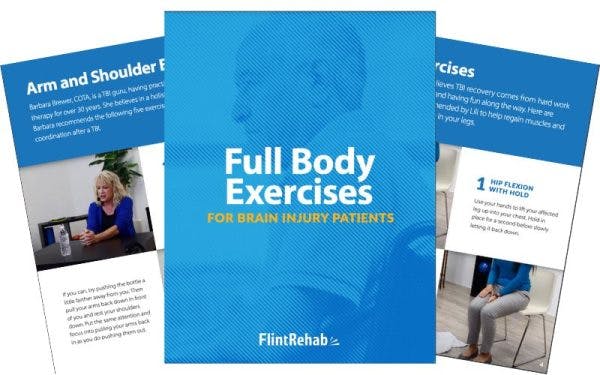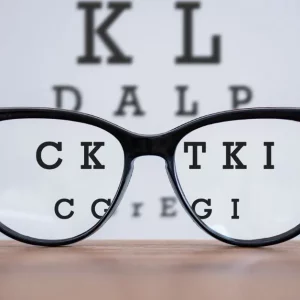Many brain injury survivors can benefit from TBI music therapy. Neurologic music therapy is a specialized branch of music therapy that involves the therapeutic use of music to treat the effects of neurological disorders, such as traumatic brain injury. It has successfully been used to address a variety of sensory, motor, speech, and cognitive disorders that many brain injury survivors experience.
This article will describe music therapy and outline the science behind it. Additionally, an explanation of the many benefits of TBI music therapy is provided. Please use the links below to jump directly to any section of this article.
What is TBI Music Therapy?
According to the American Music Therapy Association, music therapy is an evidence-based treatment involving the clinical use of music as a therapeutic modality. While the foundation is always musical in nature, music therapy can be adapted to address diverse goals, depending on the needs of the individual.
Music therapists are the only practitioners who can provide specialized music therapy services. However, other rehabilitation professionals, such as speech, occupational, and physical therapists, may also use some components of music therapy during their interventions to improve outcomes.
Although simply listening to music can have potential benefits for TBI survivors, such as reduced stress and pain levels, music therapy interventions often involve more than just listening. In addition to passively listening to music, interventions may also include producing music through singing or using an instrument, moving in rhythm to the beat of music, or even writing and discussing musical lyrics.
Neurologic music therapy is a specialized branch of music therapy focused on treating neurological conditions, such as stroke, cerebral palsy, and traumatic brain injury. Research has demonstrated that music has the ability to change the brain, playing a role in restoring functions that may have been lost after a neurological injury.
The Science of TBI Music Therapy
Music therapy is not a new concept. Many cultures have utilized music as a healing technique for thousands of years. However, with the advent of brain imaging technology, scientists were able to confirm what many instinctively knew: that music positively affects the brain.
Music has the unique ability to stimulate sensory, motor, perceptive-cognitive and emotional functions simultaneously within the brain. This results in the activation of numerous areas of the brain, in both the right and the left hemispheres. Music is one of the only sensory experiences that activates so many areas of the brain bilaterally, making it an excellent modality to use for recovering brain function.
Consistently stimulating the brain activates a process referred to as neuroplasticity. Through neuroplasticity, the brain is able to reorganize neural pathways in response to changes in the environment or experience. Therefore, when experiencing music, whether as an active participant or passive listener, adaptive rewiring in the brain may be taking place. This allows the brain to compensate for lost functions by reassigning these functions to undamaged brain regions.
Consistent, repetitive tasks and experiences are the best way to activate neuroplasticity. When an experience occurs frequently, the brain perceives a demand for the functions involved, and creates and strengthens the associated neural pathways. Neurologic music therapists can maximize on this by using similar and individualized musical experiences during sessions to promote an optimal recovery.
Music therapy may include a diverse range of musical experiences depending on one’s abilities and needs. Different types of musical experiences may activate different areas of the brain, which is why music therapy can treat a number of TBI-related conditions. Although it is still being researched, neurologic music therapy shown great promise in being an effective treatment option for traumatic brain injury because of its ability to stimulate neuroplasticity.
Benefits of Music Therapy
Music therapy can be used to treat many different secondary effects of traumatic brain injury. Since music affects the brain in observable and replicable ways, researchers and therapists have been able to design specific interventions to address certain neurological conditions. However, the studies on music therapy for TBI survivors are still limited, so more research is needed to further demonstrate its effectiveness.
An overview of how music therapy can address various TBI-related conditions is included below.
Language Difficulties
One of the most common applications of music therapy for TBI recovery is treating survivors with aphasia by helping them regain the ability to speak. Interestingly, survivors who are unable to speak due to severe expressive aphasia often retain the ability to sing. This is because speaking disorders frequently occur after damage to the left side of the brain, and singing engages healthy brain areas on the right side of the brain.
With this in mind, therapists developed a technique known as melodic intonation therapy. This therapy involves singing simple words or phrases to the tune of familiar melodies. With enough repetition, survivors can eventually change their singing speech into normal, non-melodic speech. Both music therapists and speech therapists regularly use melodic intonation therapy due to its effectiveness in restoring the ability to speak.
Cognitive Dysfunction
Music therapy may also improve cognitive functions, especially the executive functions. Executive functions allow individuals to maintain cognitive control of their behaviors, and include skills such as memory, attention, and judgment.
Music therapists often employ active music interventions, such as musical improvisation and instrument playing, to stimulate cognitive recovery. This is because these activities require the ability to use a number of cognitive skills, including planning, working memory, sustained attention, and mental flexibility. When these cognitive skills are practiced consistently, neuroplasticity is activated, which can promote lasting improvements.
Motor Impairments
Music therapy has also been shown to address motor impairments following a TBI. A common music-based intervention used by music therapists and physical therapists to improve walking is rhythmic auditory stimulation. This involves listening and moving to the beat of rhythmic music in order to improve one’s gait and walking speed.
Rhythmic auditory stimulation can be an effective intervention for improving one’s walking abilities because a key aspect of skilled movement is timing. In order to walk with a proper gait pattern, individuals must accurately time, coordinate, and execute movements. With rhythmic auditory stimulation, musical rhythms are used as cues to help survivors regain muscle control and synchronize their movements.
Music-based interventions can also be used to improve hand functions. For example, devices such as the MusicGlove can help survivors recover movement faster than other therapies due to a high repetition of movements and the enjoyment of the activity. MusicGlove motivates users to perform hundreds of therapeutic hand and finger exercises through engaging musical games, and it has been clinically proven to improve hand function in just 2 weeks.
Social, Emotional, and Behavioral Difficulties
Studies have shown that music therapy can improve one’s sense of wellbeing, increase emotional regulation skills, and advance behavioral regulation abilities. This is because a major focus of music therapy, especially when interventions involve learning to play an instrument, is helping survivors learn to monitor and modulate their own behaviors. Group neurologic music therapy can be especially effective, as survivors can learn to regulate their behaviors with others in a social setting.
For example, a potential music therapy intervention may include replicating a specific rhythm using drumsticks while background music plays. To do so, survivors must monitor whether they are replicating the rhythm accurately while staying with the beat of the music.
If they happen to lose the beat, they have to use behavioral modulation skills to determine how to get back on track. If participating in a group music therapy session, individuals may have to learn to manage or appropriately express their frustration with another survivor who is distracting them by their inability to stay in rhythm. These skills can carry over to everyday interactions and circumstances.
Music therapy can also trigger neuroplastic changes in the orbitofrontal cortex, the portion of the brain that regulates social behavior. These neurological changes can help survivors recover social skills and decrease impulsive behavior.
While music therapy shows great promise as an effective treatment for individuals following a traumatic brain injury, it is important to remember that the research supporting music therapy with TBI survivors is limited. While the research that exists shows many benefits of music therapy, more research is needed to more strongly demonstrate the effectiveness of neurologic music therapy for TBI survivors.
Understanding TBI Music Therapy
Music therapy offers a cutting-edge approach to recovery from TBI. It can promote improvements in many areas of recovery, including language production, cognitive functions, muscle control and coordination, and socioemotional regulation.
Music therapy engages several different areas in the brain at once, allowing it to improve overall brain function. While studies have demonstrated that music therapy can stimulate adaptive changes within the brain through neuroplasticity, more research is needed to more accurately determine its effectiveness for TBI recovery. Survivors should consider asking their doctors whether incorporating music therapy into their healing process could help to boost recovery.










